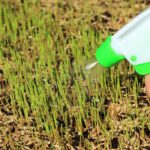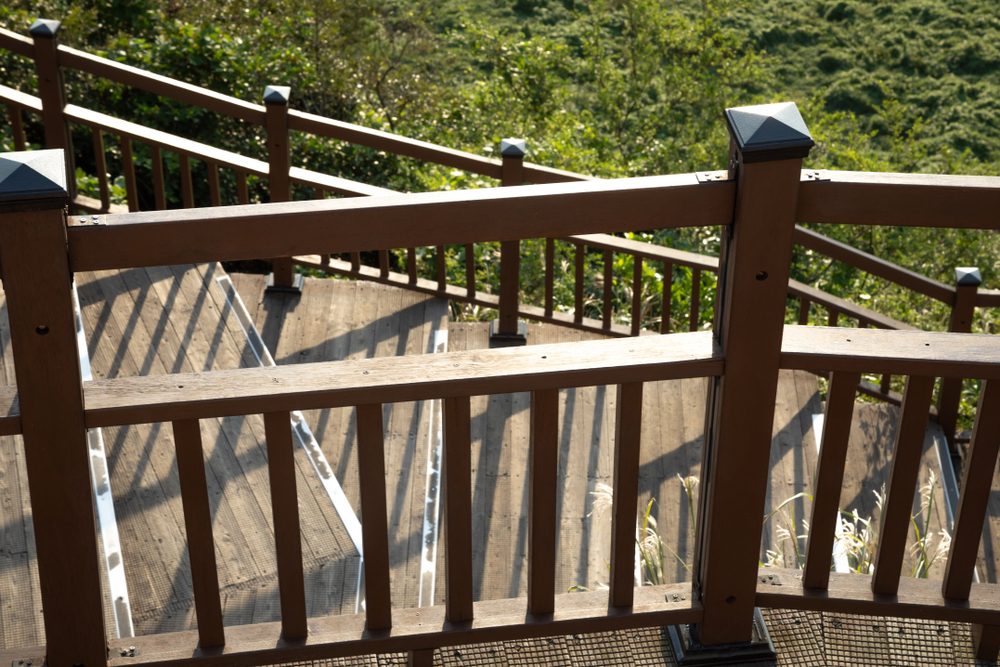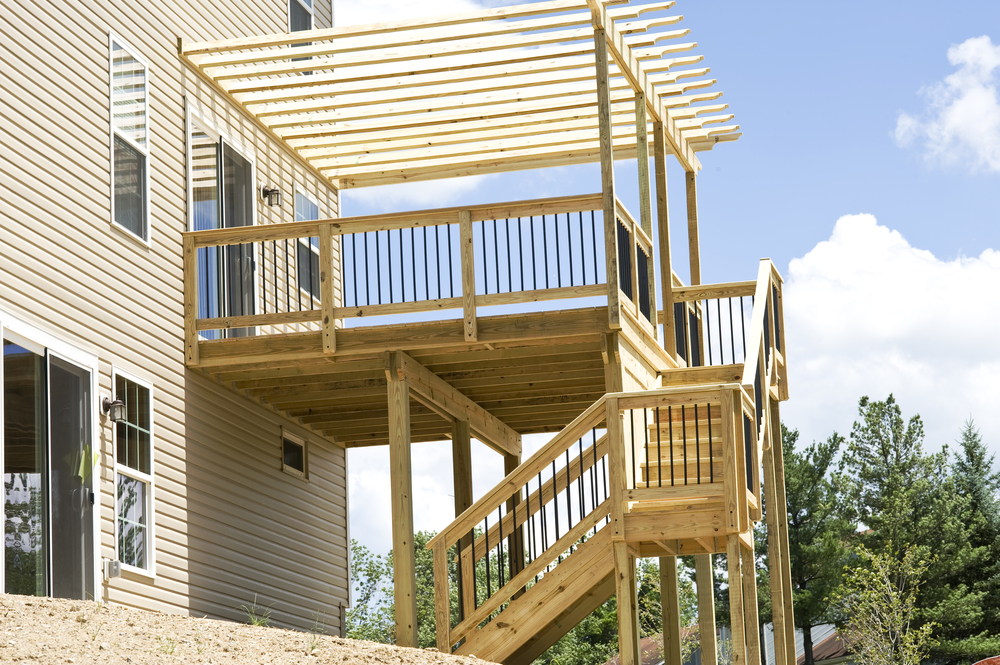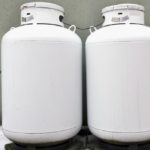Because palm trees have a leafy, tropical allure, their delicate beauty often makes people mistake them for high-maintenance plants. However, they can actually thrive in a variety of climatic conditions. Nonetheless, if you’re growing a palm tree in your backyard, giving it proper care is essential for the plant’s survival.
Newly planted palm trees need water daily in the morning or evening for the first week and every other day in the second week. Depending on the season and species, established palm trees need watering 1-3 times weekly. Outdoor plants generally require more water than indoor potted ones.
Palm trees are pretty easy to grow and maintain. However, whether they’re indoor or outdoor, palms have strict water requirements, and you’ll need to check soil moisture levels to ensure your plant stays healthy. Let’s take a look at everything you need to know about palm tree care.
How Often Should You Water a Palm Tree?
The health of any plant largely depends on how well you tend to it. Since it plays a significant role in helping the plant achieve peak growth, watering is among the top aspects of palm tree care.
Outdoor Palm Trees
It’s best if you water your outdoor palm tree 1 to 3 times a week, though the frequency will vary based on the weather and the individual species of palm tree you have. You may even have to water your palm tree daily during the hot summer months.
The frequency of watering an outdoor palm tree depends on several factors, including the age and size of the plant, the local climate, and the type of soil.
Because their thinner root systems need more consistent hydration, young trees often need to be watered more frequently than older ones. Watering your palm tree more regularly may also be necessary if you live in an extremely hot or dry environment as opposed to a damper or cooler one.
Knowing when and how much to water an outside palm tree is crucial to ensuring the tree’s continued good health and robustness.
Potted Palm Trees
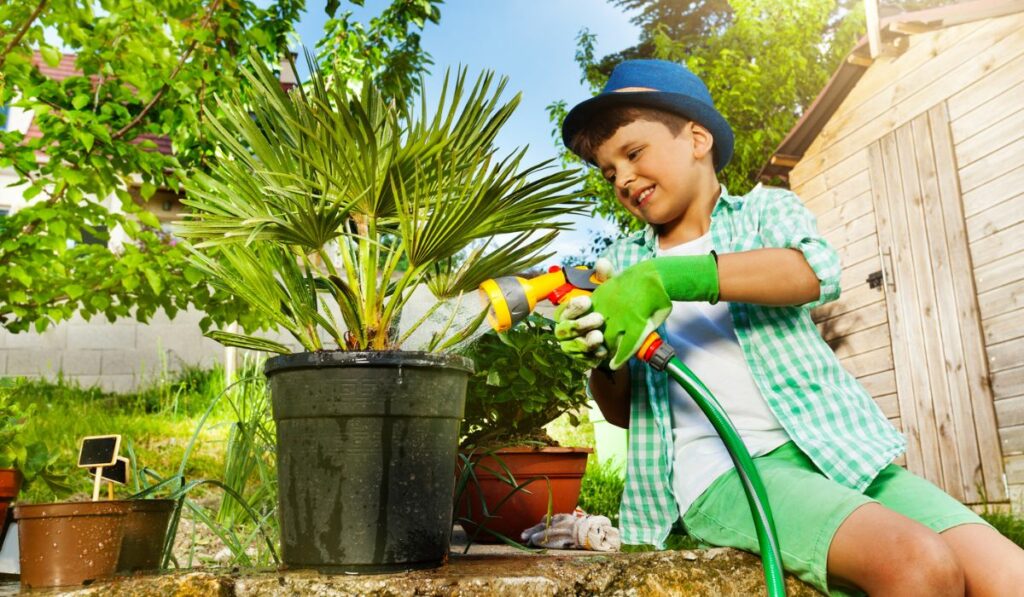
If you want your potted palm tree to thrive, you must give it the care and attention it needs. Consistent watering is crucial for the survival of your potted palm.
Water your potted palm whenever the top inch of the soil is dry. How often this actually is will vary depending on factors like weather, the pot’s size, and the palm tree’s species.
Potted palm trees may need watering twice or three times a week if the weather is sweltering. In contrast, they may only need watering once per week during cooler weather. Monitor your palm tree closely and water it as required to keep it healthy and flourishing.
Palm Tree Watering During Winter
Palms need less water in the winter than they do in the summer. Water palm trees anywhere from once a week to once a month, depending on the climate and palm variety. Be careful not to overwater your palm tree while you tend to it through the colder months.
Keep the soil around your palm slightly dry to prevent overwatering. Periodically check the top inch of soil to determine soil moisture levels. You can also look for signs that your plant needs water, such as withering leaves.
Maintaining a healthy palm tree year-round requires paying attention to its unique needs and adjusting its watering frequency as you see fit.
What Time Is Best for Watering?
Water your palms in the early morning or late evening when the sun is down. If you water your palm tree int he middle of a hot summer day and water gets on the palm tree frond, it may burn the leaves.
To remove all the dust from the leaves, mist or hose your palm during the cooler hours of the day. An automated sprinkler system with a timer (on Amazon) is an excellent idea once you determine how much water and how long your palm tree needs to be watered.
Timers help prevent flooding around the house in case you forget to turn off the sprinkler system.
Do Palm Trees Need More Water Than Other Types of Trees?
Palm plants thrive best in moist, well-drained soil, and their water requirements are higher than other plants. Water is essential for palm growth and development, regardless of the plant’s potting condition. Regardless of whether your palm tree is indoor or outdoor, it won’t look healthy unless it receives water regularly.
Because there are no universal watering requirements for palm trees, it’s best to research your unique palm tree species to determine its exact watering requirements. If you plant the tree in your garden, it will receive natural water throughout the rainy season, which you also need to take into account.
Checking Soil Moisture
Using a soil moisture meter (on Amazon) is an accurate way to determine whether your palm tree needs additional water.
For an accurate reading, you should test your soil in several spots of the planting area. The moisture meter reading will enable you to determine whether the plant needs more water.
Another easy way to check soil moisture is by feeling the top inch of soil with your fingers. If this layer is dry, it’s time to water the palm tree. You can insert a wooden stick into the ground or soil and leave it for approximately 20 seconds before pulling it out. If you find soil lumped on the stick, your plant doesn’t need more water.
How Long Can Palm Trees Go Without Water?
The palm tree is an intriguing tropical plant species because of its longevity and resistance to harsh conditions. These trees have developed several remarkable adaptations to help them thrive in the hot, humid conditions typical of many tropical regions.
They reduce water loss by minimizing transpiration from their leaves through specific membranes. They can also absorb and store water in their massive leaves and trunks.
However, despite all of these adaptations, there is a limit to how long a palm tree can remain healthy without frequent watering. Most palm trees will only survive for about two weeks without water. After two weeks, the tree will begin to display signs of stress, such as leaf yellowing and trunk browning.
Luckily, palm trees typically recover from transient drought stress as long as they receive appropriate rainfall or irrigation during this period.
Signs of Under-Watered Palm Trees
Water helps transport vital elements for plant proliferation from the roots to other plant parts. Palm trees have shallow and weak roots, requiring constant hydration. Under-watered palm trees often display the following signs:
- Brown leaves
- Dry-looking leaves
- Drooping or wilting palm fronds
- Stunted growth
If your palm tree has any of the above signs, test the soil around it to check for dryness and increase watering frequency.
Signs of Overwatered Palm Trees
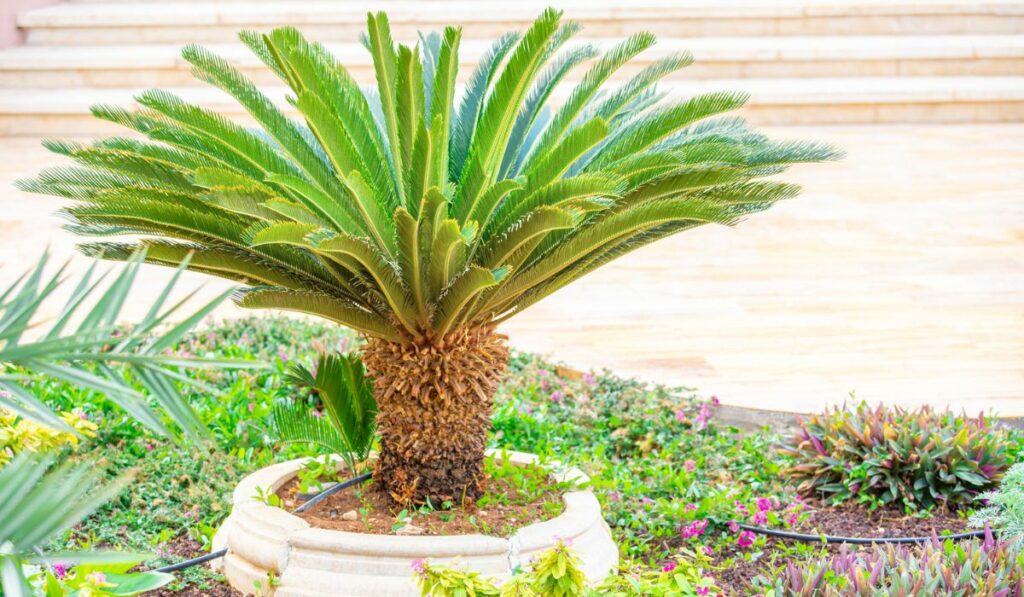
Palm trees can usually handle drought and winter weather well. However, their delicate-looking nature might deceive you into providing too much water — and overwatering is a common problem that gardeners face.
Excess moisture in the soil can suffocate your palm’s roots, preventing them from absorbing essential nutrients and minerals. It can also cause irreversible plant damage, disease, or death. Below are some signs of overwatered palm trees:
- The palm begins to shed its leaves
- Wilting of leaves and fronds
- Discoloration of the leaves, which causes them to turn brown or yellow and fall off before they’ve had a chance to dry
- Browning of new growth and younger leaves
- Nutrient deficiencies caused by overwatering, like chlorosis
- Root rot and pests
Overwatering a palm tree might kill the plant, so acting fast is essential if you want to save the tree. Plants can die from fungal root rot if left in damp soil for too long.
Other Tips for Keeping Your Palm Tree Healthy
Follow the tips below to ensure your palms stay happy and healthy:
- Apply mulch around a tree to increase the soil’s water retention ability
- Add sand to your planting soil to enhance water drainage
- Water your palm tree from the bottom to avoid canopy rot
- Don’t water deeply during every watering session
- Group palms alongside other plants with similar watering requirements
- Wait for the soil to dry before watering in winter
Always use lukewarm water when watering palm trees. Cold water may shock the roots and cause severe damage. Water your palm tree slowly and evenly until the soil gets thoroughly moist. Consider using a garden hose or sprinkler system when watering large palm trees.
If you have smaller palm trees, use a sink sprayer or watering can (on Amazon) for watering. Make sure to discard any stagnant water from the plant pots to prevent foot rot.

